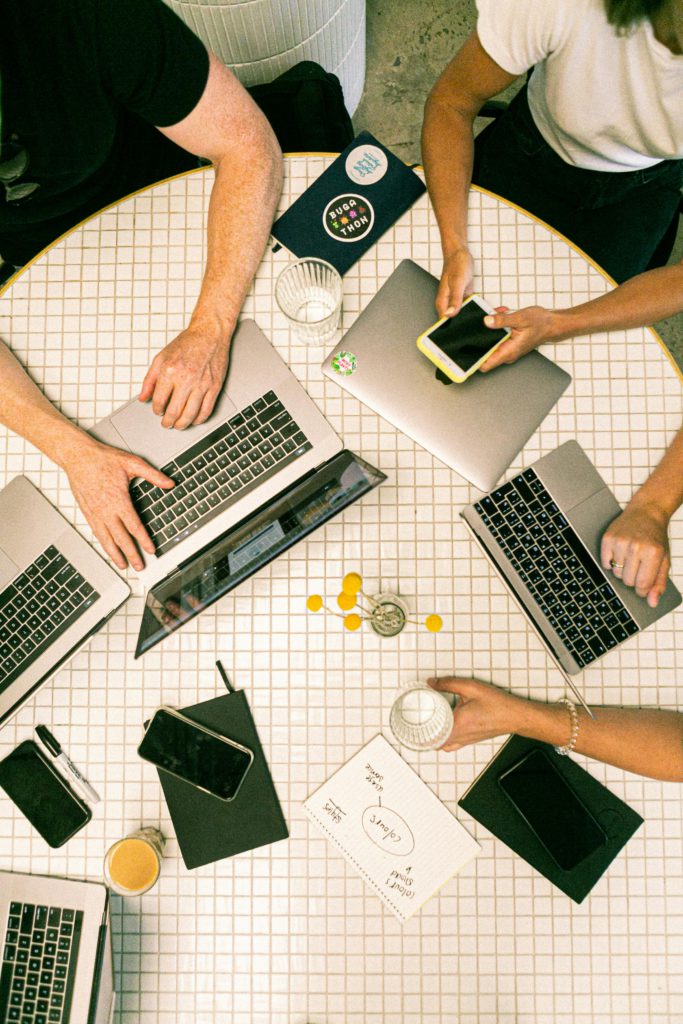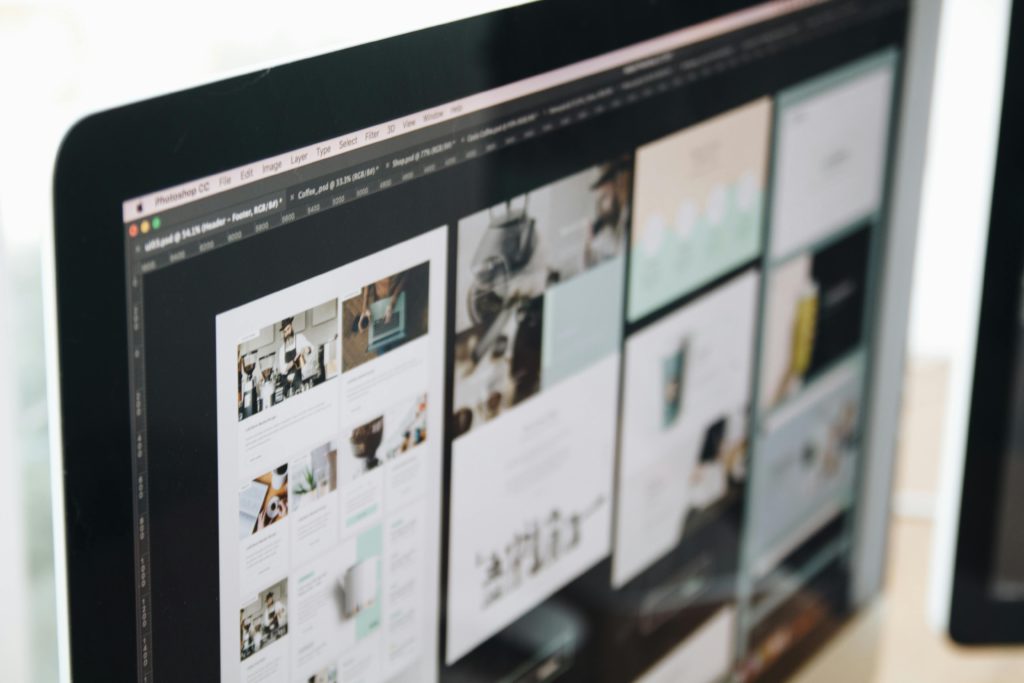Artificial intelligence, or AI, has become a buzzword in various fields, including design. Designers are increasingly resorting to AI to streamline workflows, automate repetitive tasks, and get insights into user behavior. Yet, many fear that this technology will take over humans. And it’s reasonable since AI tools can self-learn with time, adapting their behavior based on successful and unsuccessful outcomes.
AI-driven design can help professionals craft personalized experiences for users and reduce the need for manual labor. Ultimately, AI has the potential to revolutionize digital format and make the process faster, more efficient, and more accessible. It’s especially beneficial for large projects, where you can’t afford to make mistakes at the beginning and affect the whole production process.
Will AI replace designers, and what role will it play in the future? In this article, we’ll talk about the present and future of AI in design. We’ll determine whether it’s a danger or a helping hand for specialists.
Artificial Intelligence and its role in Design: current situation
AI helps designers and engineers solve complex problems by creating intelligent algorithms. It can involve using data to predict outcomes or having AI systems that can learn for themselves and come up with new ideas. For instance, AI can predict market trends or consumer needs. This knowledge will help you create an eCommerce homepage UX for your website or compose relevant emails for newsletters.
AI is a relatively new concept and still in its early stages, although we see new tools like Lensa AI emerging. Experts predict that AI will become more widespread soon, leading to further innovation in the design field. Let’s overview how designers can benefit from utilizing AI-powered tools today.
1. Determining User Preferences
To understand their target audience’s needs and preferences, designers need customer data, also known as training data. They can use this information to create well-received and successful solutions, such as:
- color schemes;
- layouts;
- overall aesthetics.
Customer data helps optimize the user experience and make it more intuitive and efficient. But how can you learn about common user patterns in the first place? Artificial intelligence can assist you with determining what particular consumers or members of your target demographic will enjoy.
Analytics solutions based on AI and machine learning (ML) can easily source data from websites, applications, and other digital services and search for trends. They present this information in an understandable format for designers to utilize.
AI offers designers a roadmap to follow, enabling a unified, approachable, and professional design. As a result, the final product is significantly better than one created using simple customer research.
Let’s take a Khroma AI tool. It’s one of the best solutions for graphic designers, enabling you to find the needed color schemes according to the industry, tone, or emotion. It employs AI and ML to analyze thousands of website screenshots and link the color palettes to their corresponding market sectors. Its customized algorithm will generate the colors you want and reject the ones you don’t.
2. Recognizing patterns and creating several variants
After identifying a pattern, artificial intelligence aids designers in producing numerous variants of the same initial product. The program generates variations based on the range of extracted colors and patterns.
How was it before AI? Creators had to design the art every time from scratch every day. It was challenging and time-consuming, especially when developing brand logos and marketing graphics with minor adjustments to make them flawless. Imagine doing it manually. Tiresome and unacceptable in 2023 and upcoming years. That’s where AI can help.
There are dozens of online AI-powered logo designer tools, such as Logo AI, Tailor Brands, Looka, and others. They have changed the field, helping specialists during creative crises.
A single marketing campaign can now include several distinct but connected designs thanks to AI’s assistance. A case in point is Nutella. The company used an AI design tool with a unique algorithm to develop variations on a specific visual theme.
Consumers found this promotion much more intriguing than a single new product. They started collecting the limited-edition Nutella jar designs as ads spread through the media.
3. Boosting creativity
With all its advantages, AI still needs to catch up to the human mind regarding creativity. Yet, it can help specialists by performing tedious and repetitive tasks. So designers can focus on generating new ideas for their projects instead of resizing, cropping, and correcting image backgrounds most of the working time.
AI functions as a virtual assistant for designers. It automates tasks, such as image manipulation or data entry, boosting productivity and improving the quality of the work.
Designs.ai is one such tool. It allows everyone to develop their portfolio, even with little design experience. For instance, you can insert your brand information and preferences to get an AI-generated logo and templates.
4. Personalizing the User Experience
People expect to feel special when opening a website or entering a store. That’s why personalization is essential in web or app development. According to a McKinsey report, 72% of respondents want the company to recognize their needs and wants, including:
- customizing their purchase journey to find the needed products faster;
- showing relevant recommendations;
- adapting messaging to the particular client, etc.
Personalization improves retention and adoption. But you need not only gather data on your targeted audience and analyze it but divide people into groups with similar characteristics and cater to different user types. Following proper user segmentation, you should highlight the beneficial features of that particular group.
It’s a challenging task but manageable with the help of AI. It can determine the most appealing visuals to target consumers within specific industries. How? It combines market data with design information and provides suggestions based on these findings. So AI technology reduces the work required to A/B test website designs and marketing campaigns.
The more AI progresses, the more precise personalization will become. It can enhance adaptive design technologies, changing the appearance of websites or online marketing materials according to the user.
What will happen to Design in the future?
The design will continue to evolve, with technological advancements likely to play a major role. We can expect it to become more user-friendly and intuitive. Technology will play a significant role in this shift and the increasing importance of data and analytics. Some potential developments include:
- increased use of artificial intelligence and machine learning in design, leading to more efficient and personalized design processes;
- greater use of virtual and augmented reality, allowing for more immersive and interactive web experiences;
- continued adoption of responsive design, enabling websites to adapt to different screen sizes and devices. And designers and developers will zero in on ensuring the best mobile experience;
- creating 3D models and prototypes;
- bigger focus on user experience and accessibility, creating more intuitive and user-friendly designs;
- more use of animation and motion design;
- migrating to cloud solutions to quickly scale projects up and down;
- employing open-source design tools and platforms like Figma, Sketch, InVision, and Adobe XD.
It’s hard to predict how the design will develop in the future. Designers will have to overcome particular issues. For example, they will need to go beyond design skills and pick up new ones, such as coding, future planning, or building journey maps. It means professionals should stay on top of their game and keep up with recent trends, tools, and approaches. One thing remains clear: technologies won’t replace humans.
Many specialists fear that the wide range of AI capabilities threatens designers and their employment. However, AI is far from outperforming people in terms of originality, creativity, and human touch.
Designers will employ AI tools to overcome problems and reduce mistakes. But generating unique and original content will remain the designers’ responsibility. While AI may augment the work of specialists and make certain aspects of the design process more efficient, it is unlikely to fully replace humans soon.
How will AI affect Design in the future?
Designing with AI brings up a whole new universe of possibilities. While it falls short of human capabilities, such as strategic thinking and empathy, it can unlock new levels of creativity. Let’s study some possible applications of AI in design in the future.
1. Improving image quality
Modern designers rarely manually alter photographs. Instead, they employ sophisticated software to correct photographic flaws, such as:
- enhancing the image quality;
- eliminating mistakes;
- replacing any missing parts of the picture.
The result is a crisp, clean, and beautiful image without human intervention. Various AI-based image improvement technologies can greatly ease the process of restoring photos and improving resolution. They can quickly transform low-quality, messy, and blurry photographs into high-quality and clear ones. Additionally, they can fix your color balance, contrast, and bad lighting.
While AI can do all these things, it is not perfect. The image quality improvement process requires extensive data and processing power, which is hard to achieve with current technology alone. Therefore, even with the help of AI-based software, you sometimes need to intervene and manually edit some details.
However, with proper training and practice, you can become a master at photo restoration using AI-based software. Here are some tips on improving your photography skills with AI:
- Choose the right photos to work on, such as high-resolution pictures.
- Create an ideal environment for your photo project. Since AI works best in well-lit conditions, ensure that the room where you work has adequate lighting. Also note that the brighter the light, the better your photo will look after AI editing.
- Set up your camera correctly before taking a picture. It will provide you with a clear and high-quality image right away without having to do any touch-ups.
- Pick an AI-based software with all the needed features for the project. The program should support essential elements to make photo projects as efficient as possible. There are various tools on the market to enhance images, such as Upscalepics, Vance AI, HitPaw, and Icons8.
- Take photos from various angles and lighting conditions. Change shapes and angles while taking pictures. This way, you can test how AI editing affects images of different qualities and resolutions.
Here is how Upscalepics edited the photo. The skin color and other elements became more smooth, yet, you need to upgrade your profile to remove the watermark.
2. Introducing Virtual Influencers
Virtual influencers are computer-generated characters promoting products, services, or ideas on social media and other digital platforms. They typically look like animated or 3D-rendered images, mimicing human behavior and interacting with audiences like real-life influencers. Some examples of popular virtual influencers include Lil Miquela, Shudu, and Lu do Magalu.

Screenshots taken on official Shudu’s, Lil Miquela’s, and Lu do Magalu’s Instagram accounts
Why do companies resort to virtual influencers more and more? Brands leverage these public figures for a variety of reasons, including:
- Cost: Virtual influencers are cheaper to create and maintain than real-life bloggers. You can use them to advertise products and services at a fraction of the cost.
- Control: You have more control over the message and image of virtual influencers, as you can specify that they should align with the brand’s values and vision.
- Flexibility: Virtual public figures can appear on different media, including social media, video games, and virtual reality. You can integrate them into marketing campaigns in a more flexible way.
- Reach: They have the potential to reach a global audience. Some of the most famous characters have millions of followers on Instagram, YouTube, Twitter, and so on. They can target specific demographics or geographic regions.
- Innovation: Virtual influencers are considered an innovative way to connect with consumers, providing a new and unique way for brands to market their products or services.
- Consistency: You can schedule posting and adjust messaging to ensure a consistent presence on social media and other platforms.
3. Speeding up Image Generation
Another way to utilize AI in design revolves around image generation. Image generation with AI technologies brings the following benefits to designers:
- creating stunning visuals with minimal effort;
- generating photos according to a designer’s specific requirements;
- performing image optimization tasks.
One of the most notable examples is software like OpenAI’s Dall-E 2. This tool lets you input your description and receive realistic images and art. Apart from that, Dall-E 2 can edit uploaded images based on the request and produce visuals similar to the uploaded ones.
AI-generated pictures find various creative applications, from product design to drafting art pieces. In the future, AI-based image generation and manipulation may become an integral part of the design process.
4. Removing image background with Visual Recognition
Background removal is the process of isolating and removing the background of an image or video, leaving only the foreground object(s) visible. It’s usually one of the most troublesome tasks. Designers have to spend hours removing complex angular things or people with curly hair. This technique is common in image editing, video production, and other fields where the focus needs to be on a specific object or person.
With the advent of AI and machine learning, background removal has become more efficient and accurate, allowing for easy manipulation and editing of images and videos. AI uses image segmentation techniques, such as deep learning algorithms, to accurately identify and separate the foreground object(s) from the background. You can leverage that in photo editing and eCommerce product image optimization. The top free AI background removal programs are as follows:
- Removal.AI;
- Inpixio.com;
- Remove.bg;
- Clippingmagic.com.
5. Simplifying content generation for everyone
As technologies advance, they can create compelling art from scratch. So even people with no experience in design will manage to satisfy their goals, finding unique pictures for their campaigns, social media, and websites. Introducing AI tools will remove the barriers to entry in the market, allowing virtually anyone with a creative idea to make it real. It will cause the lower end of the market to disappear.
How can specialists in this field increase the demand for their services? The solution is to accumulate knowledge of AI design tools and develop soft skills, for example:
- creativity;
- social intelligence;
- empathy;
- problem framing;
- inventive problem-solving;
- negotiation;
- persuasion, etc.
Meanwhile, designers will have to acquire additional knowledge and expertise to keep up with the changing market, potentially leading to more unique specializations.
To sum up
Why is AI becoming so widespread in design? AI-driven solutions have the potential to quickly learn from users and create designs that respond to their needs. Designers can get valuable feedback to analyze mistakes and make better decisions. AI also contributes to faster content generation. AI-powered design tools allow for rapid iteration and make it easier for teams to quickly edit and launch an app or website within a limited time.
But that’s not all. AI tools can reduce the risk of user errors and provide personalized experiences. Additionally, AI design solutions can optimize the user experience and make sure that the right features and functions are present in the final product.
With its potential to increase designers’ productivity, AI can lead to sophisticated designs that are both user-friendly and visually appealing. But will AI tools replace designers? Currently, the answer is “no”. Artificial intelligence is a helpful tool, but it can’t and won’t replace the human mind.













0 Comments